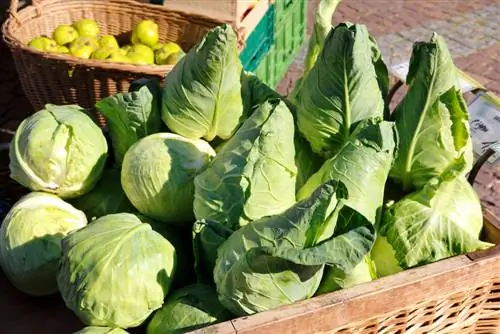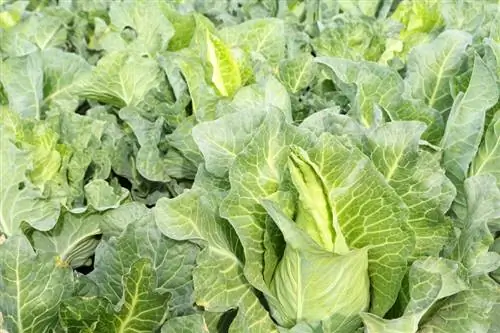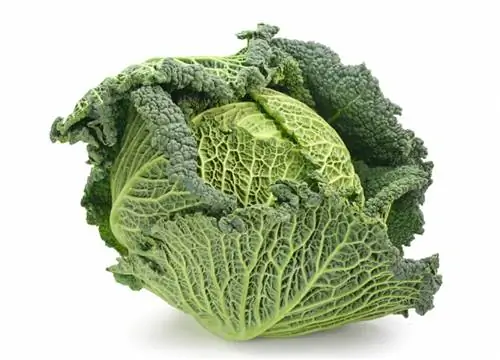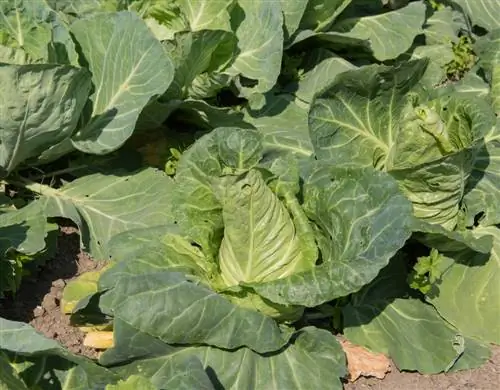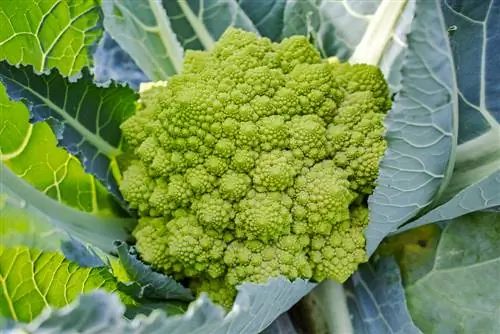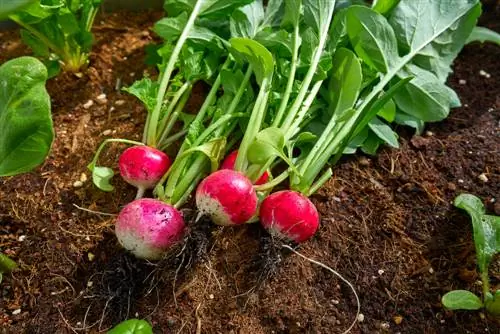- Author admin [email protected].
- Public 2023-12-16 16:46.
- Last modified 2025-01-23 11:22.
Pointed cabbage is characterized by very tender and soft leaves, which is why the vegetable does not have a long shelf life. But due to its mild taste and short growing season, the cabbage family enjoys great popularity.

When is pointed cabbage season?
The pointed cabbage season lasts from May to October, with the harvest time of the early variety 'Erstling' starting in mid-May. Under optimal conditions, pointed cabbage can be harvested until December, with the flavor becoming stronger as it ripens.
Early gardening season
Pointed cabbage is related to white cabbage and is characterized by a more delicate aroma. Its peak season extends from May to October. This type of cabbage is one of the types of cabbage that is ready to harvest early. Under optimal conditions, the heads can be harvested until December, with the flavor intensifying as they ripen and becoming stronger towards the end of the year.
Variety overview:
- 'Firstling': early variety that is brought forward from January, planted out in March and is ready to harvest from May
- 'Caraflex tolerant' (F1): develops pointed heads that can be harvested from September
- 'Kalibos': Mixture of red and pointed cabbage with harvest time in autumn
Cultivation
Since the cabbage vegetable is extremely fast-growing, spring proves to be ideal for growing pointed cabbage. Under optimal conditions, the vegetables quickly produce their first yields.
Cultivation
If you want to harvest early cabbage from May, you will need to grow seeds on the bright windowsill in January. The young plants can move into the garden bed from March. Here we recommend planting in rows with a distance of 40 centimeters between the plants.
Claims
The cabbage plant needs as many hours of sunshine as possible to ripen, which is why a location in full sun is recommended. Although they tolerate shadier areas, the harvest in these areas will be less bountiful. The substrate is ideally well loosened and deep. It can be loamy and should provide sufficient nutrients, as pointed cabbage is a heavy feeder. If the soil is sandy, improve it with compost (€43.00 on Amazon), stable manure and horn shavings.
Care
The nutrient requirements are in the medium to high range, so you should regularly apply nitrogen and potassium-rich fertilizers during the growing season. Keep the substrate evenly moist. Fluctuations cause the heads to split, which promotes pests and disease. As hack plants, the plants benefit from regular loosening of the top layer of soil. This measure is recommended as long as the leaves do not yet cover the ground.
Tip
If the cabbage gives off an intense sulfur smell when cooking, the plant was supplied with too much nitrogen during the growth phase. Stop fertilizing about a month before the planned harvest time.
Harvest
With ideal weather conditions and good care, the first cabbages from the spring planting are ready to harvest from mid-May. Once the heads have reached a weight of 1.5 kilograms, start harvesting. Leave specimens that are smaller. The harvest window extends until the end of June. You shouldn't wait too long, as pointed cabbage tends to split open as it gets older. It becomes unsightly and has a shorter shelf life.

